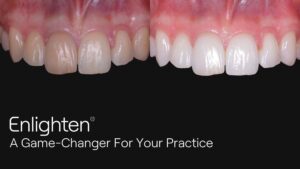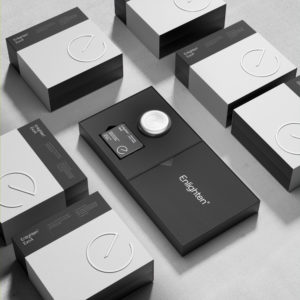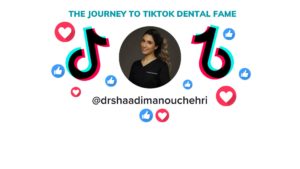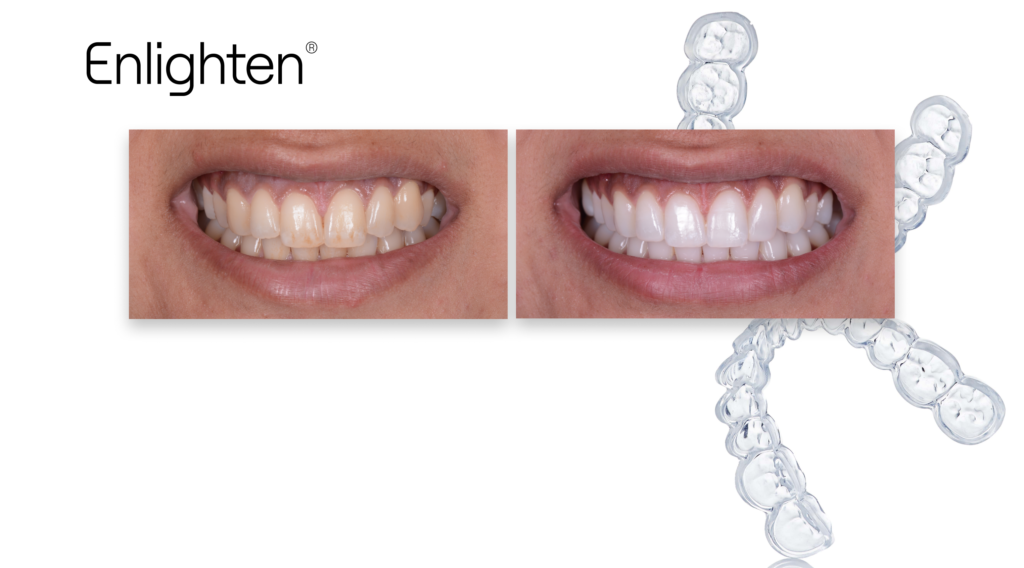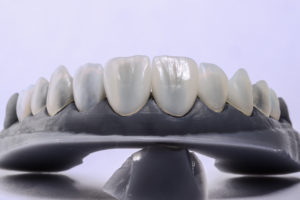How To Treat Difficult Whitening Cases
Are you finding that some of your patients are not reaching maximum satisfaction with their whitening treatment? Here is an insight into why that may be and how to fix it.
If you don’t know that the Enlighten system guarantees shade B1, you’ve probably been living under a rock. But that’s ok! We should probably start by stating the obvious and say that the information below was gathered over years of assessing successful and failed cases, all treated with the Enlighten Whitening system only. Now that that’s out of the way…
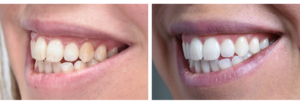
What is B1 shade and what does it look like?
It is the lightest natural shade on the VITA shade guide and the dream shade for most people. For all our patients out there curious about this, the shade most commonly found in people is A3. We are usually born with relatively white teeth but as we age, they start to accumulate stains and turn yellow from eating and drinking habits, inconsistent oral hygiene, or different health conditions.
For all our patients out there curious about this, the shade most commonly found in people is A3. We are usually born with relatively white teeth but as we age, they start to accumulate stains and turn yellow from eating and drinking habits, inconsistent oral hygiene, or different health conditions.

So how do we make sure that all patients are able to achieve that gorgeous, pearly B1 shade?
Understanding the clinical situations that make for simple whitening cases, but especially for difficult ones is one of the cornerstones of successful treatment planning in whitening. After analysing over 3700 Enlighten 2-week (from the previous Evo3 System) and 3-week (from the current Evo4 System) failure cases we pinned them down to 6 types of cases, with Bruxism being the most common problem. Not everyone’s teeth are the same, so it’s not realistic to expect that a standard 3-weeks will work the same for everyone.
Standard cases (cases that have not been identified as difficult) can usually achieve B1 within 3 weeks of whitening. These are cases with good oral hygiene and teeth in good overall health with no apparent signs of disease. The recommended top-up regime for standard cases is: Whilst ideally maintaining the attachments on the back teeth, top-up with a Week 2 syringe (16% CP) once/month for the first 6 months. Get the attachments removed and for the following year, whiten one night every 2 months. In the long run, whiten one night every 6 months or as and when necessary. As we consistently adhere to the top-up regime over an extended period, the demand for it is expected to decrease gradually. Patients with known sensitivity issues can be recommended the same top-up regime, with the only modification being the use of the lower concentration of Week 1 gel (10% CP)

Enlighten, with an impressive track record of 21 years marked by continuous improvement, was founded by dentists and has successfully treated over 200,000 patients. The distinction of Enlighten lies in its deep-bleaching process, setting it apart from other brands. The assurance of achieving B1 shade is not coincidental; rather, it results from years of meticulous observation, case analysis, and continuous refinement of the product based on a deep understanding of its performance.
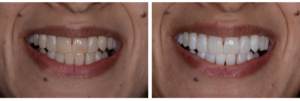
APE BET. You heard it here first!
A little tip: you can remember the following cases with the Mnemonic APE BET. Here are the 6 clinical situations which make whitening harder:
1. AGE
This has been well documented, but our analysis showed that patients over 60 were most likely to take longer to achieve B1.
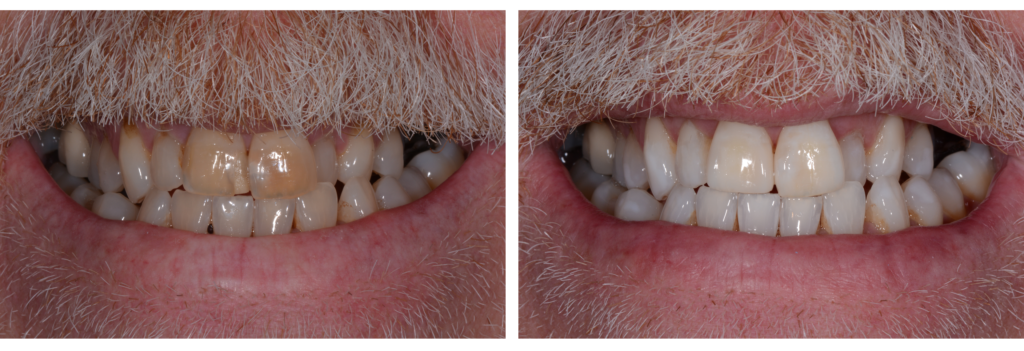
Recommended treatment plan (if patient has no known sensitivity issues):
Minimum 5 weeks with the following protocol:
- Week 1 at 10% CP overnight for as long as asleep
- Week 2 at 16% CP overnight for as long as asleep
- Week 3 at 6% HP during the day for 1 hour each day
- Week 4 at 16% CP overnight for as long as asleep
- Week 5 at 16% CP overnight for as long as asleep
If patient does have sensitivity issues, swap all overnight gel for the lower concentration, Week 1 syringe (10% CP).
2. PROXIMITY TO GINGIVAL MARGIN
Problems like dark areas, white and brown spots, stained crack lines and even tetracycline banding are more difficult to resolve with whitening as they get nearer to the gingival margin.
There are 2 main reasons for this:
- Enamel is thinnest at the gingival margin.
- Saliva leakage into and gel leakage out of the tray is greatest at the gingival margin.

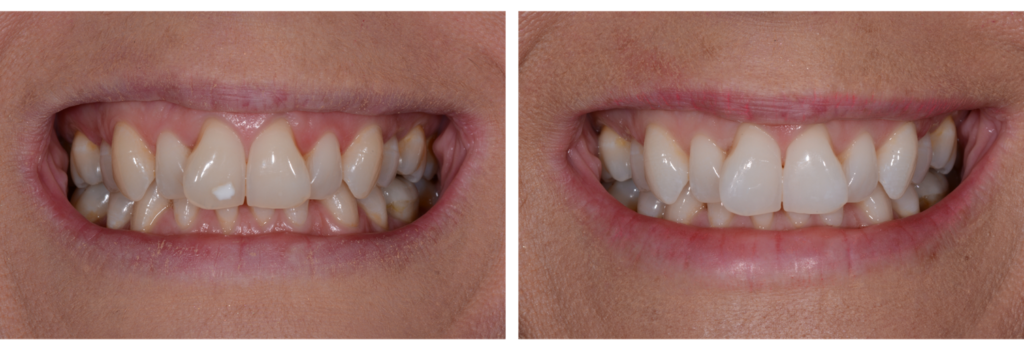
Recommended treatment plan (if patient has no known sensitivity issues):
Minimum 5 weeks with the following protocol:
- Week 1 at 10% CP overnight for as long as asleep
- Week 2 at 16% CP overnight for as long as asleep
- Week 3 at 6% HP during the day for 1 hour each day
- Week 4 at 16% CP overnight for as long as asleep
- Week 5 at 16% CP overnight for as long as asleep
If patient does have sensitivity issues, swap all overnight gel for the lower concentration, Week 1 syringe (10% CP).
3. ENAMEL THICKNESS
Thinner enamel is harder to bleach. Very thin enamel is then in turn very hard to bleach. The whitening saturation point (the point where the tooth cannot get any whiter) is most affected by this variable than any other. This can be caused by:
- Age
- Attrition
- Abrasion
- Erosion


Recommended treatment plan (if patient has no known sensitivity issues):
Minimum 5 weeks with the following protocol:
- Week 1 at 10% CP overnight for as long as asleep
- Week 2 at 16% CP overnight for as long as asleep
- Week 3 at 6% HP during the day for 1 hour each day
- Week 4 at 16% CP overnight for as long as asleep
- Week 5 at 16% CP overnight for as long as asleep
If patient does have sensitivity issues, swap all overnight gel for the lower concentration, Week 1 syringe (10% CP).
Note that if there is not enough enamel to whiten, patient may require extra treatments (such as composite bonding or veneers or ceramic veneers) to achieve desirable results.
4. BRUXISM (teeth grinding)
By far the biggest problem – 70% of Enlighten 2-week failures are due to bruxism. Bruxists:
- Flex their trays causing leakage.
- Have more sensitivity than average leading to lowered compliance.
- Tend to have thinner enamel.
Signs of a bruxist: flat, worn edges of teeth, dentine visible on the incisal edge, chipped teeth.
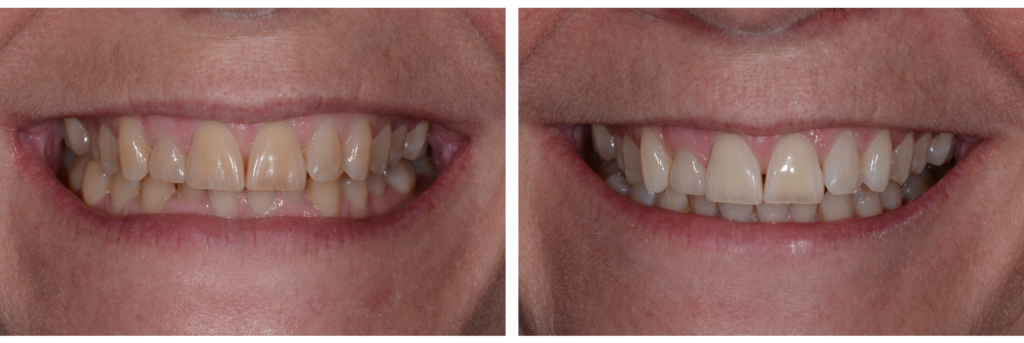

Recommended treatment plan:
Start with a standard course of 3 weeks with the below protocol but also warn your patient that they may need to extend for an extra 2 weeks if their results aren’t up to par of they relapse early.
- Week 1 at 10% CP overnight for as long as asleep
- Week 2 at 16% CP overnight for as long as asleep
- Week 3 at 6% HP during the day for 1 hour each day
( + if needed)
- Week 4 at 16% CP during DAYTIME for 3-4 hours
- Week 5 at 16% CP during DAYTIME for 3-4 hours
If patient does have sensitivity issues, swap all overnight gel for the lower concentration, Week 1 syringe (10% CP).
5. EXPECTATIONS
Some patients may have unrealistic aesthetic demands. They may be looking for a fake white look only achievable with porcelain or composite restorations. Make sure your patients understand exactly what can be achieved with whitening and give no assurances except for the B1 guarantee which can be measured with a shade tab.
 Unrealistic expectations would be completely symmetrical, perfectly edged teeth, all teeth are one solid, opaque (often very bright white) shade. In one word, perfect teeth which don’t really happen naturally (if they do, are extremely rare)
Unrealistic expectations would be completely symmetrical, perfectly edged teeth, all teeth are one solid, opaque (often very bright white) shade. In one word, perfect teeth which don’t really happen naturally (if they do, are extremely rare)

Realistic expectations are naturally occurring, aesthetically pleasant teeth that are likely to have very similar but not completely identical correlating teeth on the opposite side, a uniform colour with some naturally-occurrent translucency, potentially slightly worn edges from usual wear & tear.
Recommended treatment plan: Standard 3 weeks of at-home bleaching, but warn that they may need an extra 2 weeks. If, at the end of the 5 weeks your patient is still unhappy (due to unrealistic expectations from whitening alone), explain that they may need further treatment such as composite bonding or veneers as there is only ever so much you achieve with whitening alone.
6. TETRACYCLINE STAINING
This can be severe or mild. It is classified in 3 degrees. Tetracycline patients who exhibit any of the other 5 issues above are more difficult to bleach.

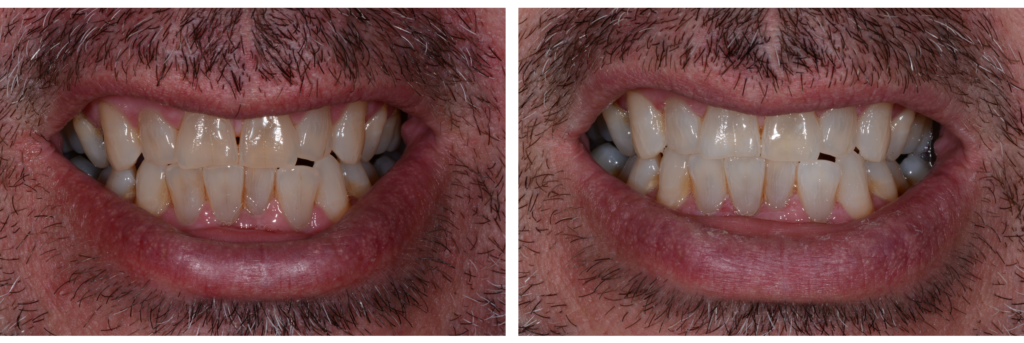
Recommended treatment plan: Minimum 5 weeks of at-home bleaching. If the case is severe, increase the minimum weeks to 8 and bring the patient back to reassess.
What do I do if my patient whitens to a good standard but then relapses early?
Sometimes patients mistake the rehydration process for regression expressing their concerns or dissatisfaction, so make sure to explain this from the outset to avoid misunderstandings. Whilst undergoing the whitening process, the peroxide dehydrates the teeth in order to penetrate them successfully. A dehydrated tooth appears much brighter, sometimes a chalky white but within a few days of stopping the treatment, saliva and diet hydrates them back stabilising the colour, and that is the real whitening result.
If you have determined that your patient has indeed experienced an early relapse, not the rehydration process, then that is a sign of insufficient bleaching. This can happen if the patient was an undiagnosed difficult case to start with, or due to patient compliance. In this case, reassess and prescribe the patient an extra 2 weeks, and in cases of severe relapse, start with 7 consecutive nights of whitening, then start a prolonged top-up regime to settle in those results and stabilise the shade, in the following sequence:
- 1 night per week x 4 applications
- 1 night every 2 weeks x 4 applications
- 1 night per month x 4 applications
- 1 night every 2 months x onwards
Remember to charge accordingly for the extra weeks difficult cases require and make sure to explain to the patients exactly why they classify as a difficult case. As much as Enlighten is a deep-bleaching process and a patient’s best chance at a great teeth whitening result, it is by no means a miracle treatment and no one-size-fits-all. It is a treatment that must be personally tailored to everyone’s needs and wants.
There you have it! Don’t forget, you can use the Mnemonic APE BET to keep these etched in your memory.
Age
Proximity
Enamel
Bruxism
Expectations
Tetracycline
Happy Whitening!



